Is your little one starting to learn how to write letters and working on their letter recognition? Here are some tips to help teach your child proper letter formation with some fun letter tracing activities! We’ve also added in some extra tips and tricks to help with forming letters, including ways to develop fine motor skills.
Supporting early literacy at home
New to early literacy? Don’t worry! Learn the basics in our post, Supporting early literacy at homel
Penmanship skills are an important part of everyday life, making writing practice a fundamental part of a child’s learning experience. My biggest piece of advice when it comes to learning how to write? Keep it fun!
But, before a child can hold a pencil, never mind learn to trace letters, there are some other things you’ll want to work on first. Firstly, how can you write a letter without recognizing it? And secondly, how can you hold a pencil without established fine motor skills?
So, let’s dive into these two topics first.
Letter recognition
Letter recognition is a foundational reading and writing skill. The ABCs of Literacy recommends creating a “literacy-rich environment” for children expressing a desire to learn their letters.
You can create this space by offering lots of alphabet activities and integrating them into your everyday life. Actually, How Wee Learn has a bunch of super fun activities to teach letter recognition, like an alphabet recognition scavenger hunt. This former elementary teacher also teaches which order to teach letters in, which has been super helpful for me as a teacher candidate!
I’ve also been told by numerous literacy specialists that you should start with the child’s name letters (and How Wee Learn recommends this, too). These are not only the letters they will use all the time when writing their name, but they give meaning to learning letters, too.
Here are some other ideas for working on letter recognition:
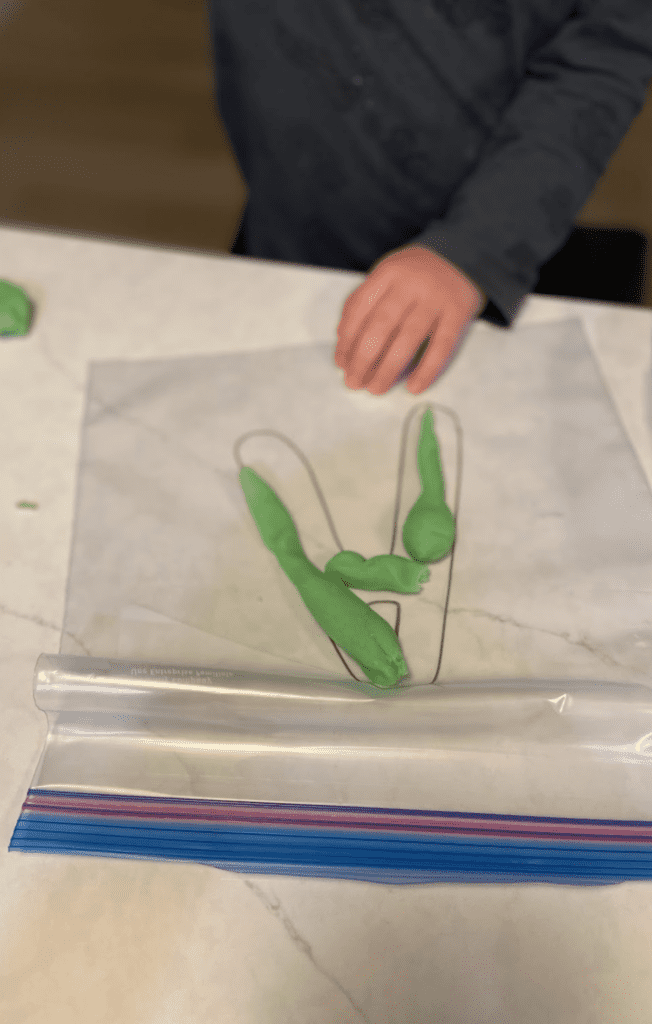
Letter tracing with Play-doh
Okay, so it’s not really ‘tracing’ per say, more like… Letter building? Print (or write) a large bubble letter on paper and place the paper inside a plastic bag or sheet protector. After the child identifies the letter, ask them to build it out of play-doh!
I’ve also done this with emergent readers working on sight words, but since they tend to work a lot quicker, I’ll just write it on a whiteboard and let them build on top of that or write it on a bag with a dry erase.
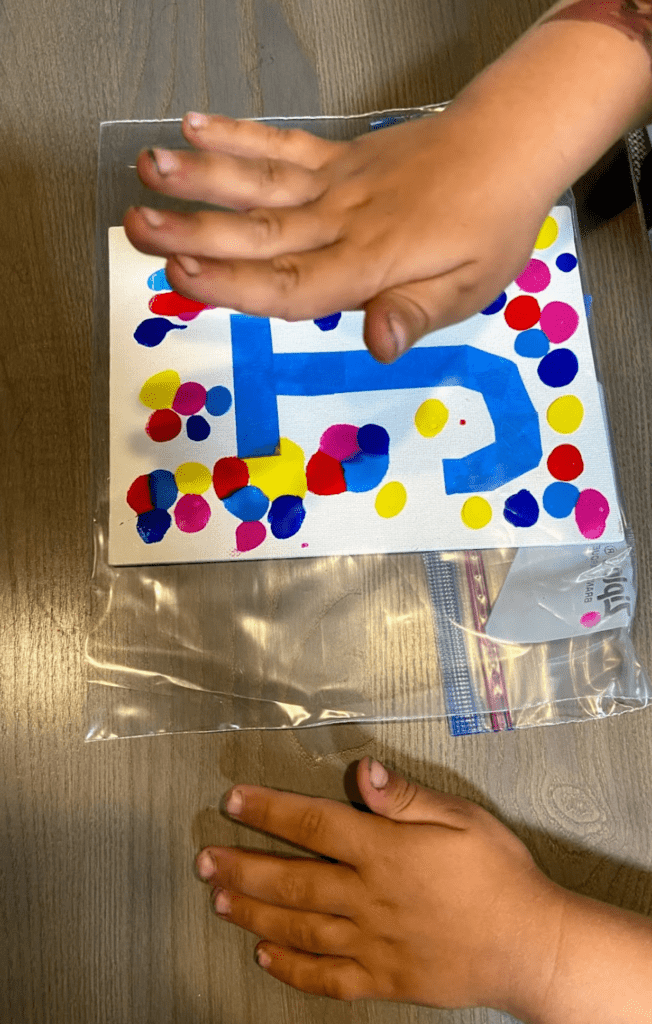
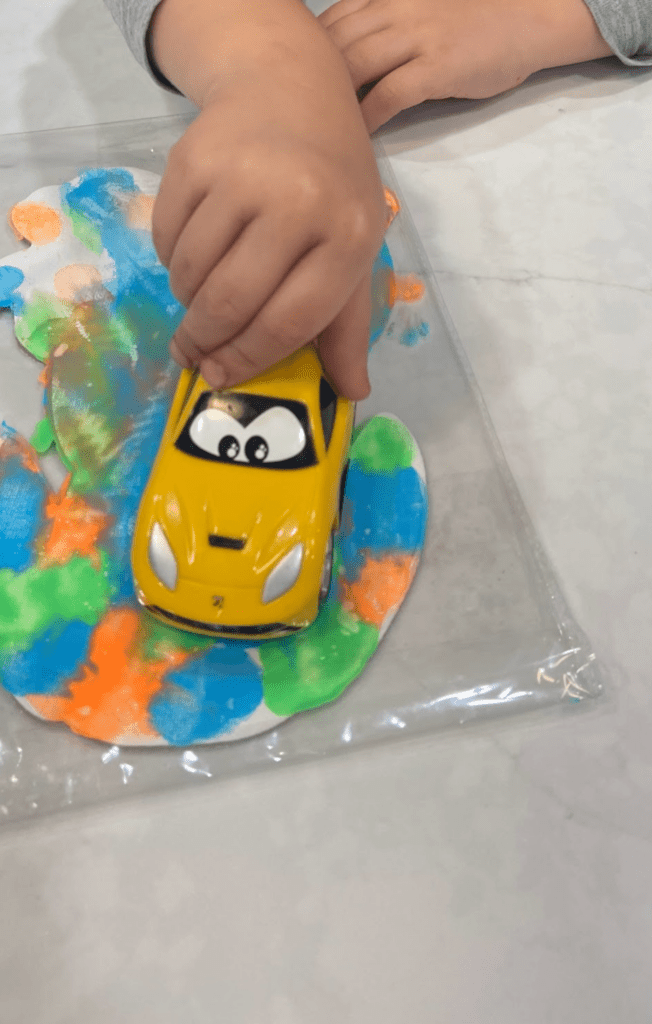
Create art with their letter name
Not only will they have tons of fun making the art, like we did in this no-mess painting activity, but they’ll be so excited to display “their letter” once it dries. This activity was a total hit… One group of children even used their cars to smush the paint around! Once it was dried, they peeled off the blue painter’s tape to reveal their letter.
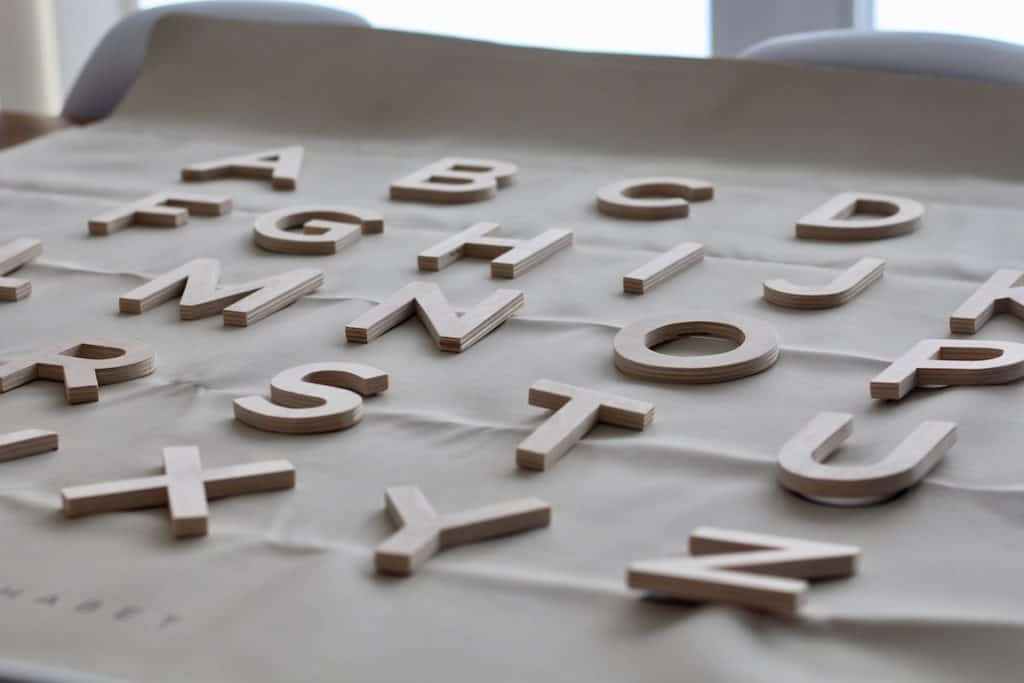
Play games and complete puzzles with letters
This little mat is a cute way to practice letter recognition! The kids can match the wooden letters to the black letters underneath or you can put them in a bin and go through them one at a time. Let them pull a letter, ask what they found, and let them match it to the written letter! Then they can practice pronunciation and recognizing letters.
Fine motor skills
Another important step in preparing your children to practice tracing is to work on fine motor activities. This prepares their hands for writing!
Fine motor development can be taught in a ton of different ways. Whenever your children are playing with play-doh, kneading plasticine, or kneading dough, for example, they’re building these skills. Things like gardening, painting, or water play are all other ways that children can develop these skills. Basically, if they’re using their hands for an activity, they’re working on those muscles!
Letter formation
The Occupational Therapist (OT) has the best post on letter formation. They tell you which letters to teach (and in which order), as well as give you activities that practice letter formation. What I love the most about their activities is they are rooted in OT interventions and they provide sensory-based and hands-on approaches to practice writing.
Honestly – If you’re preparing to teach children how to practice writing – Read their post!
OT describes correct letter formation as being:
- The multiple parts of writing a letter, including pencil placement
- The ability to move the pencil in the right direction while writing
- Forming proper letter parts (the crosses of a T or correctly joining parts of the K, for example)
When teaching letter formation, here are some tricks I use:
- Write in highlighter and let the child copy over it
- Provide a writing sample for them to copy
- Rainbow writing: Pick a letter (or word) they want to write. Write it once, then write over top of it with all of the colors of the rainbow to create a fun layered effect!
- Hands-on and multi-sensory approach letter building (like in the photo above). You could build letters with anything… Play-doh, popsicle sticks, toy cars, sticks outside… Whatever you have on hand!
Ways to practice letter tracing
When teaching both lowercase letters and uppercase letters, youll want to curate a bunch of letter formation activities that make sense for your learners. Kids love multi-sensorial and hands-on approaches to learning. And, let’s face it, tracing letters on paper over and over again isn’t super exciting…
Plus, if your little one is having a hard time holding a pencil and creating proper letter shapes, writing on worksheets isn’t going to be the most effective way to improve their writing.
Alternatively, you could use sensory-based letter writing
- Have them write in sand with their finger
- Use Q-tips dipped in paint
- Make sensory writing bags filled with gel or shaving cream, write the letters in sharipe, and let them copy with their finger or a dry-erase marker
- Wipe-off letters from a whiteboard or chalkboard. Kiddos can use their fingers, an eraser, or if you’re using a chalkboard they could use a paint brush with water!
Providing hands on activities and engaging games like these will help children learn to write a new letter.
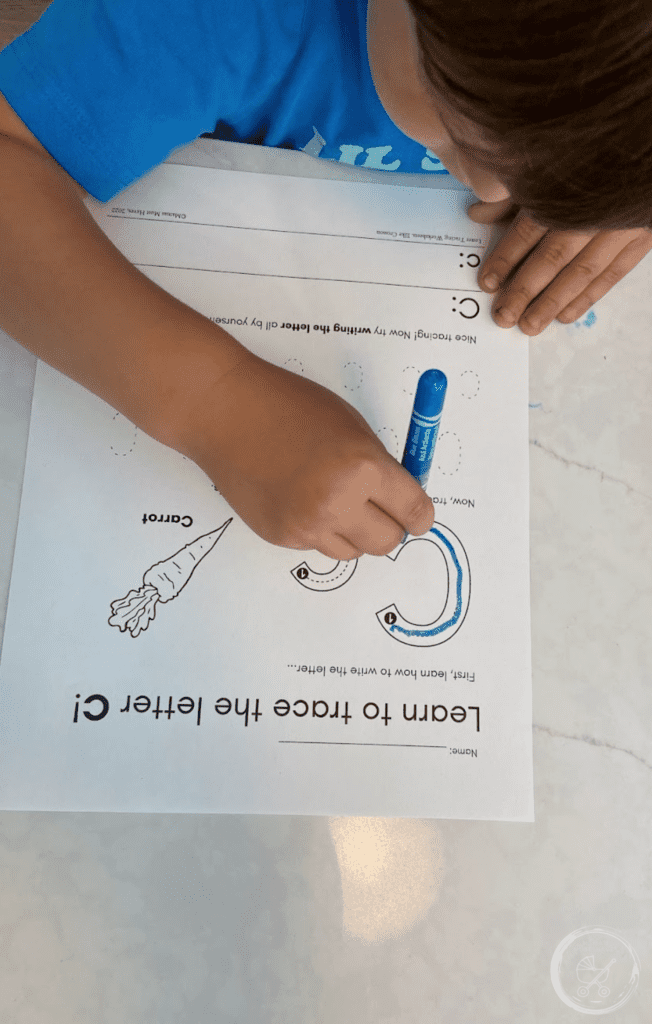
Letter tracing with worksheets
That being said, letter worksheets have their place! Once your child can recognize both uppercase and lowercase letters and are showing interest in writing them, you can use worksheets to practice writing.
There are lots of workbooks you can find and tons of printable resources online. You could also use the classic tracing strips!
Letter tracing games
If your kiddo gets some tech time, you could also play virtual games to practice alphbet tracing. Apps like the one from ABC kids, for example, get your child to trace the entire alphabet in a fun way!
Conclusion
If your child has begun to show interest in writing, first off, yay!! This is a super exciting part of their literacy journey. But, before you can jump right into letter tracing activities, you’ll want to work with them on letter recognition and fine motor skills.
Once your little one recognizes letters and has the hand strength to hold a pencil, they’re ready to start tracing! My biggest emphasis is to keep things fun. I’ve also got another post filled with literacy tips that you can click here to read. Supplement activities like writing and worksheets with games, and technology, and keep offering activities that work on fine motor control. The root of all of these things should emphasize general phonemic awareness skills, so as to prepare your children for reading later on.
Once they feel confident in their abilities to recognize, write, and say individual letters, you can move on to the beginning sounds of words and high-frequency words. This will set them up for literary success as they begin reading.
To help kids learn letter tracing, including proper letter formation and how to recognize letters, you can offer many engaging activities like sensory-based letter tracing, worksheets, and tech games. Offering a variety of alphabet activities will ensure that young kids have fun learning this essential skill – One letter at a time! Their skill level will improve vastly with repeated practice.
Resources
Here are some other articles that you may enjoy:
Sight word sentences for emergent readers
Prepositions of place for Kindergarten: Learning activities
The best books for a 1-Year-Old: Types and titles
Reading and writing with young learners
Learning to trace is just one part of a child’s literacy journey! Check out our literacy category for more articles about reading and writing.

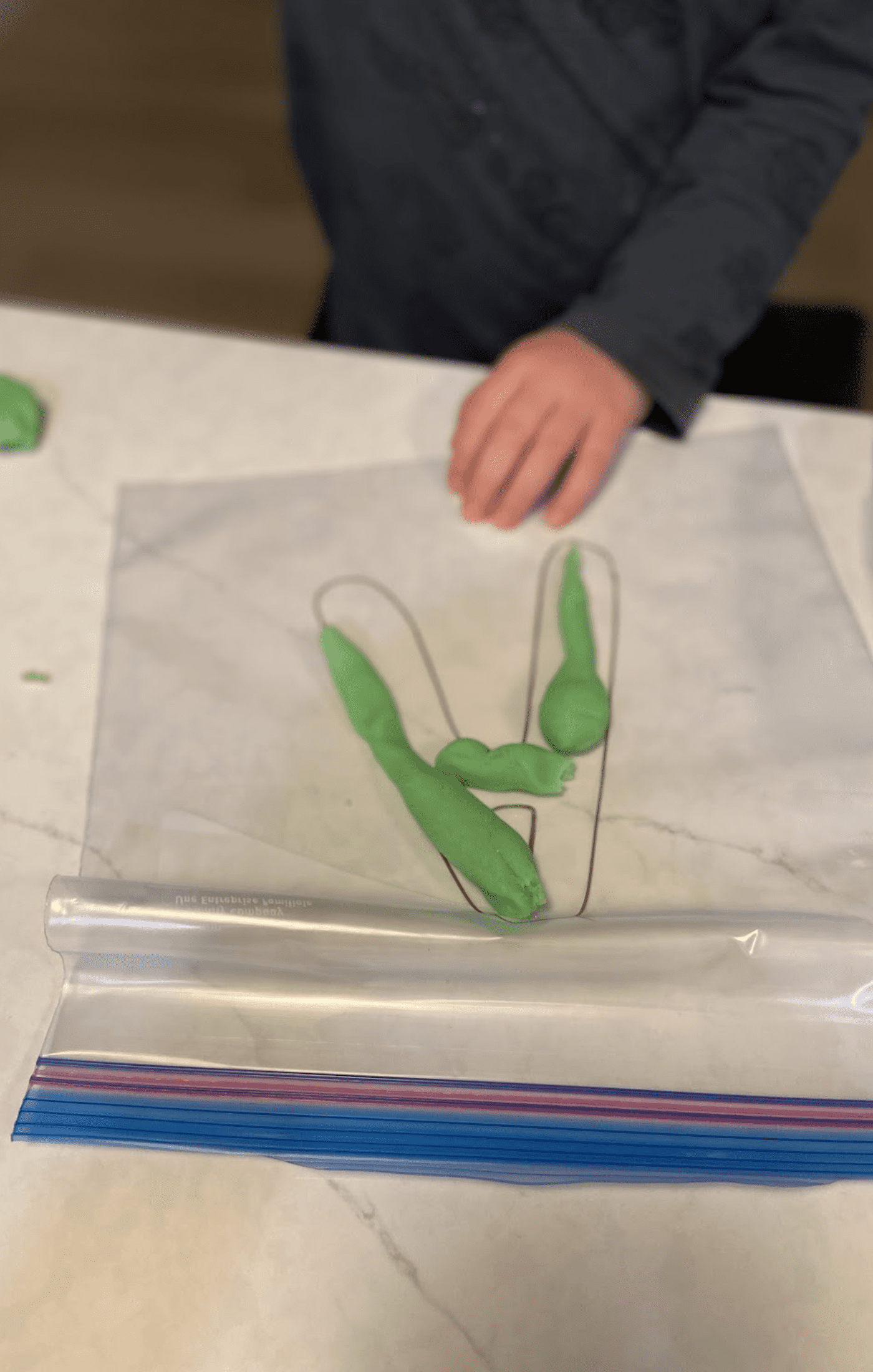
Leave a Reply